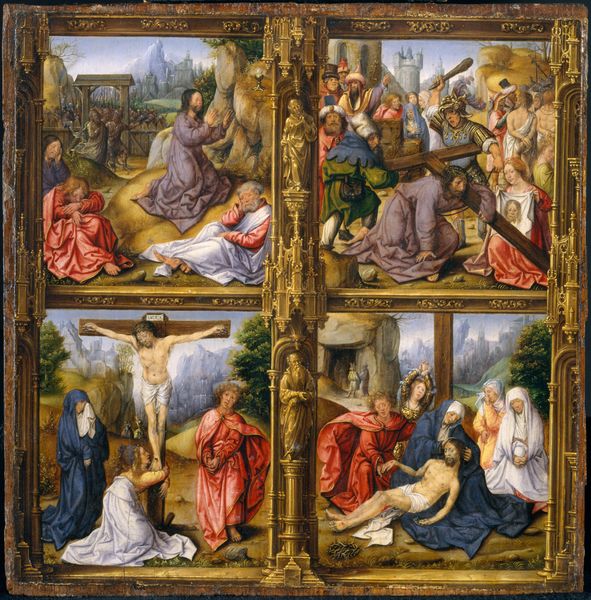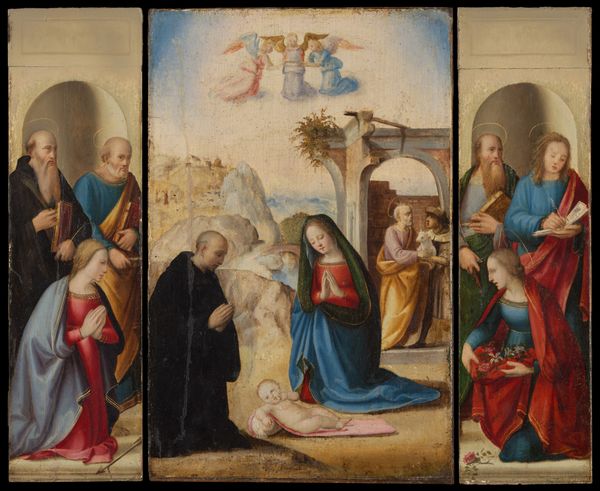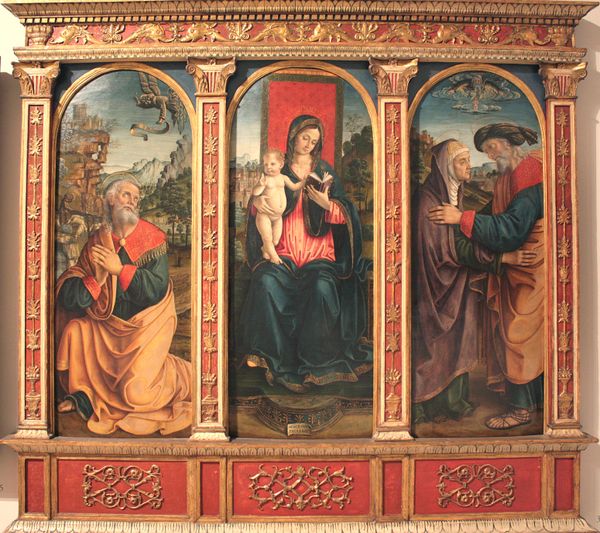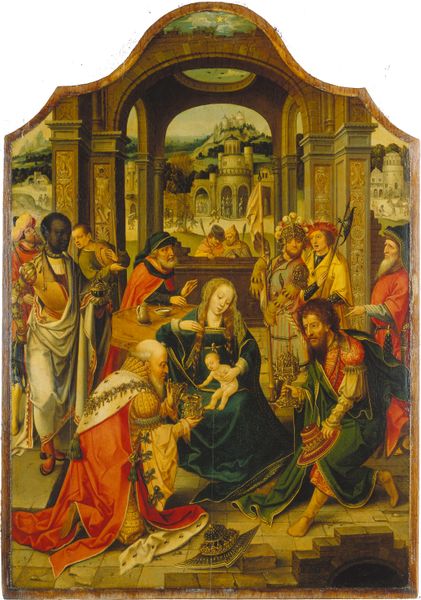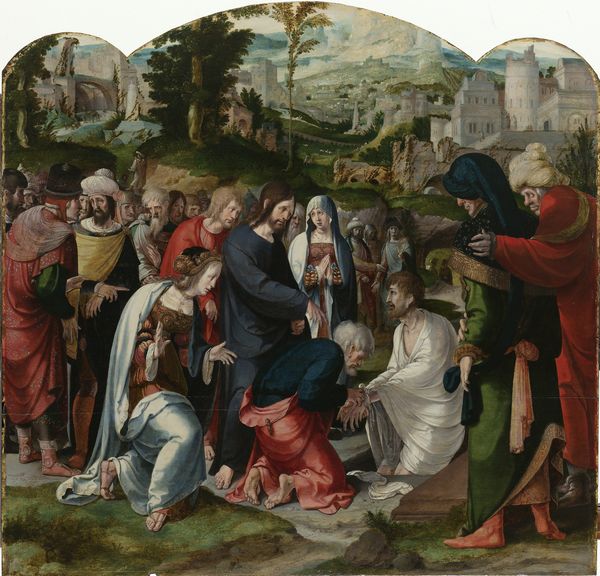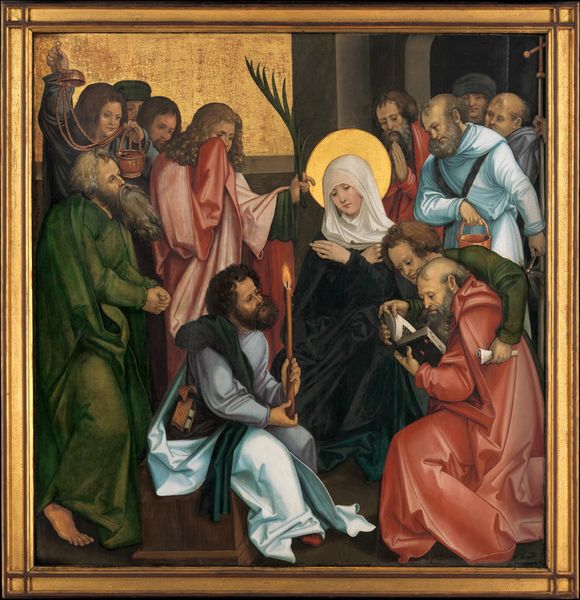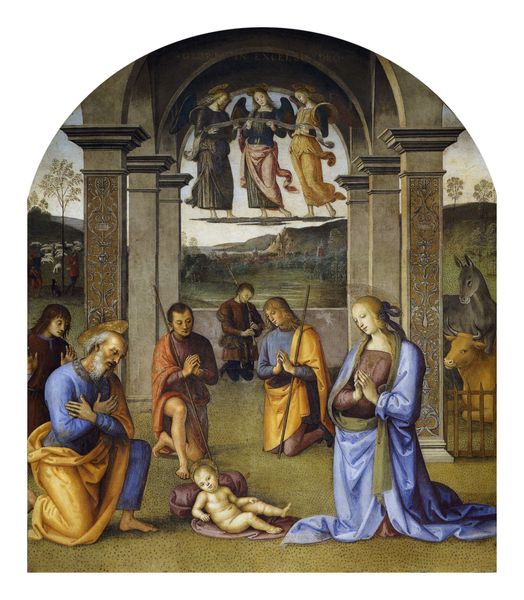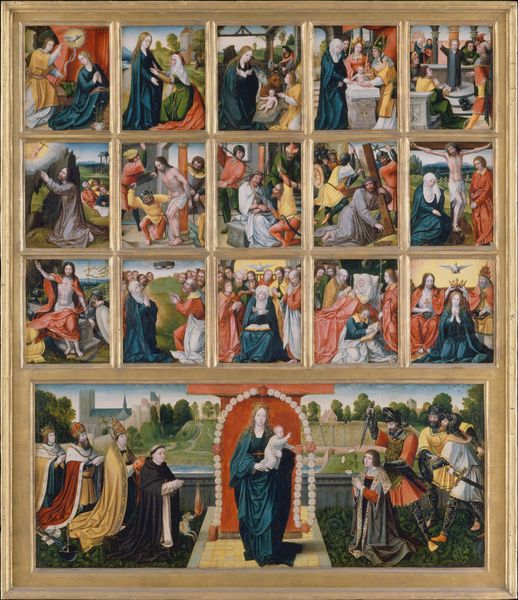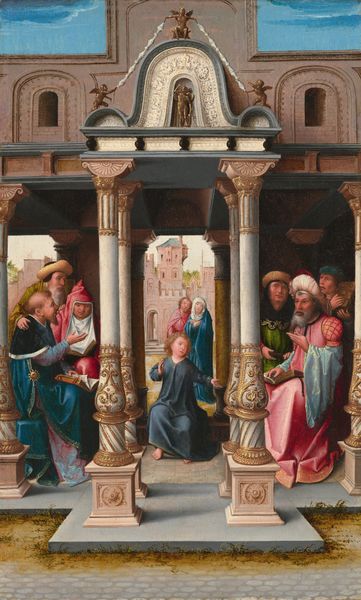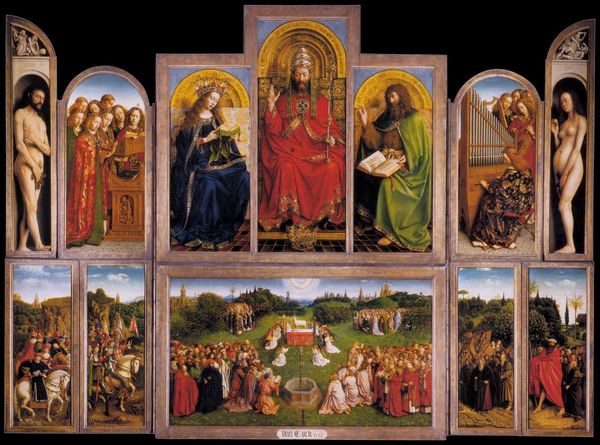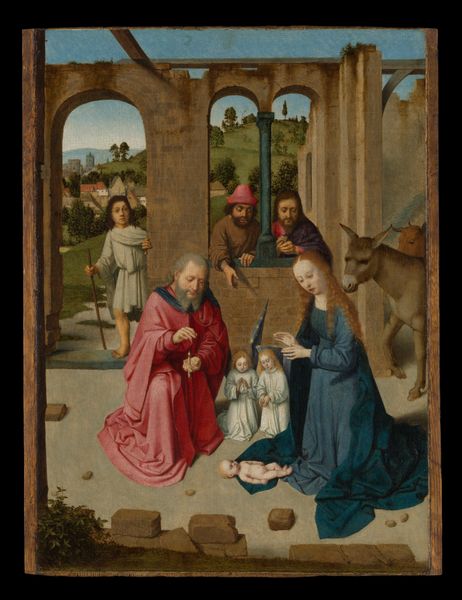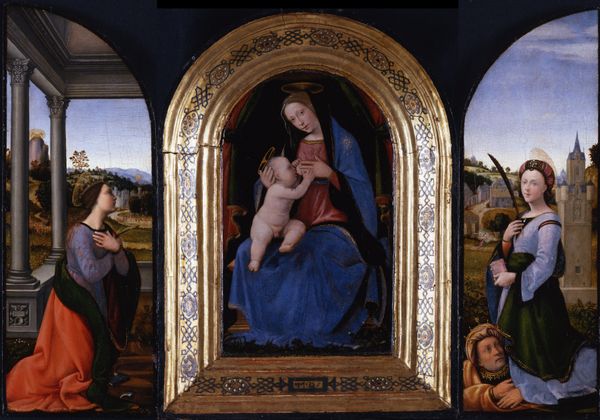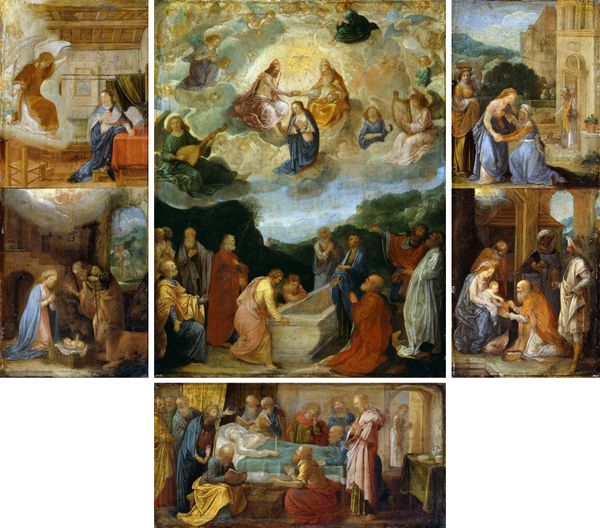
panel, tempera, oil-paint
#
portrait
#
high-renaissance
#
panel
#
narrative-art
#
tempera
#
oil-paint
#
landscape
#
holy-places
#
figuration
#
oil painting
#
history-painting
#
italian-renaissance
#
early-renaissance
Dimensions: 88 x 174 cm
Copyright: Public domain
The Albani Torlonia Polyptych was created by Pietro Perugino around 1491 with oil on wood. It depicts the Madonna and Child with Saints, and the Crucifixion. Notice the recurring motif of kneeling figures. In the side panels, we see angels and saints kneeling in reverence. This posture, deeply rooted in religious iconography, transcends mere physical positioning; it embodies humility, devotion, and supplication. The act of kneeling appears as early as ancient Egypt, where pharaohs were depicted kneeling before deities, symbolizing their subservience. In Christian art, this gesture becomes a powerful expression of piety and acknowledgment of divine authority. Such representations resonate with a collective memory of submission, a subconscious understanding of reverence that has been passed down through centuries. The emotional impact of this image lies in its ability to tap into these deep-seated cultural associations, engaging the viewer on a profound, psychological level. This posture has resurfaced in various contexts throughout history, constantly evolving in its significance, revealing the intricate interplay between cultural memory and artistic expression.
Comments
No comments
Be the first to comment and join the conversation on the ultimate creative platform.
